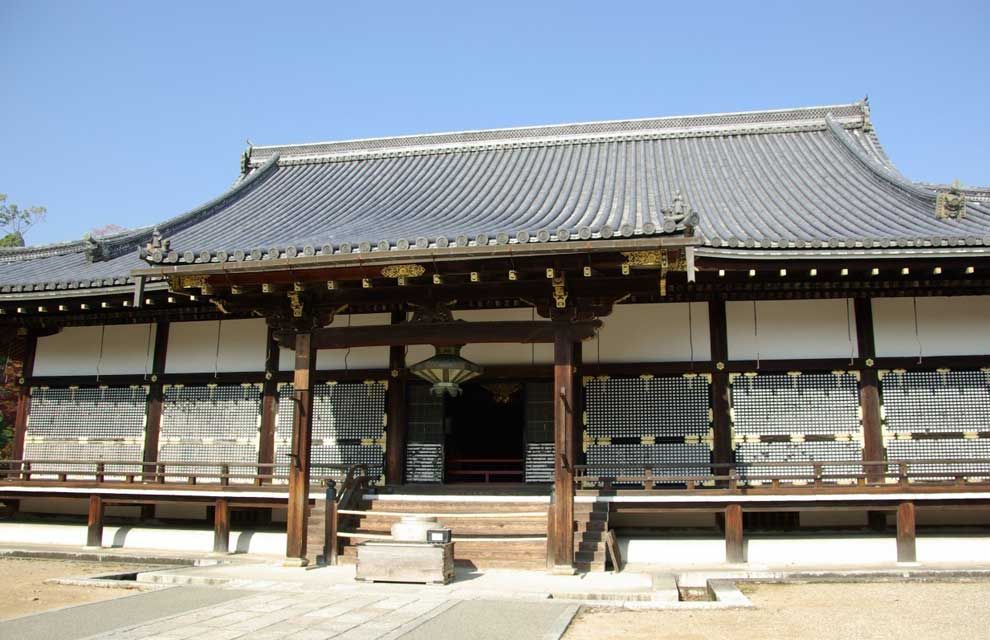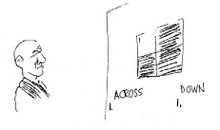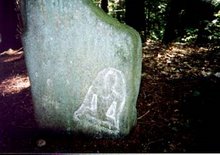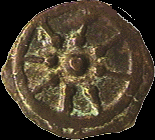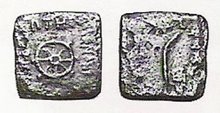Saturday, November 17, 2012
To ascend is to fall...
The knell of the bells at the Gion temple
Echoes the impermanence of all things.
The colour of the flowers on its double-trunked tree
Reveals the truth that to flourish is to fall.
He who is proud is not so for long,
Like a passing dream on a night in spring.
He who is brave is finally destroyed,
To be no more than dust before the wind.
source
See also: Heiki Monogatari
祇園精舎の鐘の聲、
諸行無常の響あり。
娑羅雙樹の花の色、
盛者必衰のことわりをあらはす。
おごれる人も久しからず、
唯春の夜の夢のごとし。
たけき者も遂にほろびぬ、
偏に風の前の塵に同じ。
Gion shouja no kane no koe
shogyou mujou no hibiki ari.
Shara souju no hana no iro
jousha hissui no kotowari o arawasu.
Ogoreru hito mo hisashikarazu,
Tada haru no yo no yume no gotoshi.
Takeki mono mo tsui ni horobinu.
Hitoe ni kaze no mae no chiri ni onaji.
“The sound of the Gion Shoja temple bells
echoes the impermanence of all things;
the color of the sala flowers*
reveals the truth that to flourish is to fall.
The proud do not endure,
like a passing dream on a night in spring;
the mighty fall at last,
to be no more than dust before the wind.”
― Helen Craig McCullough, The Tale of the Heike
The 2nd Abbot of SFZC Zentatsu Richard Baker apologized for a bump in the road - some 30 years past. SFZC survived. And so did Richard Baker.
http://50years.sfzc.org/weekend-dharma-talks
And so did you and I or I would not be writing it and you would not be reading it.
*Shorea robusta - not to be confused with the cannonball tree
Tuesday, June 19, 2012
Puzzle
 The Ten Ox Herding Pictures
From The Manual of Zen Buddhism,
By Shubun (15th Century). With adjustments to the D.T. Suzuki translation.
The Ten Ox Herding Pictures
From The Manual of Zen Buddhism,
By Shubun (15th Century). With adjustments to the D.T. Suzuki translation.
 1. Undisciplined
With his horns fiercely projected in the air, the beast snorts. Madly running over mountain paths, farther and farther he goes astray! A dark cloud spreads across the entrance of the valley. And who knows how many of the fine fresh herbs he has trampled carelessly under his wild hoofs?
1. Undisciplined
With his horns fiercely projected in the air, the beast snorts. Madly running over mountain paths, farther and farther he goes astray! A dark cloud spreads across the entrance of the valley. And who knows how many of the fine fresh herbs he has trampled carelessly under his wild hoofs?
 2. Discipline Begun
Now in possession of a straw rope, I pass it through his nose. Once he makes a frantic attempt to run away, but he is severely whipped. The beast resists training with all the power he has in his wild and ungoverned nature. But the rustic ox herder maintains a steady pull on the tether and is ever-ready to correct with his whip.
2. Discipline Begun
Now in possession of a straw rope, I pass it through his nose. Once he makes a frantic attempt to run away, but he is severely whipped. The beast resists training with all the power he has in his wild and ungoverned nature. But the rustic ox herder maintains a steady pull on the tether and is ever-ready to correct with his whip.
 3. In the Harness
Gradually, after getting into the harness, the beast is now content to be led by the nose. Crossing a stream or walking along a mountain path, he follows every step of the leader; The leader holds the rope firmly in his hand never letting it go,
All day long he is on the alert - almost unconscious of fatigue.
3. In the Harness
Gradually, after getting into the harness, the beast is now content to be led by the nose. Crossing a stream or walking along a mountain path, he follows every step of the leader; The leader holds the rope firmly in his hand never letting it go,
All day long he is on the alert - almost unconscious of fatigue.
 4. Faced Around
After many long days of training the result begins to show and the beast's faced is turned; A nature once so wild and ungoverned is finally broken, he has become gentler; But the tender has not yet given him his full confidence, He still maintains his straw rope with which the ox is now tied to a tree.
4. Faced Around
After many long days of training the result begins to show and the beast's faced is turned; A nature once so wild and ungoverned is finally broken, he has become gentler; But the tender has not yet given him his full confidence, He still maintains his straw rope with which the ox is now tied to a tree.
 Face turned after long days of training... A nature once wild becomes governed...
Face turned after long days of training... A nature once wild becomes governed...
 5. Tamed
Under the green willow tree and by the ancient mountain stream, The ox is set at liberty to pursue his own pleasures; At the eventide when a grey mist descends on the pasture, The boy winds his homeward way with the animal quietly following.
5. Tamed
Under the green willow tree and by the ancient mountain stream, The ox is set at liberty to pursue his own pleasures; At the eventide when a grey mist descends on the pasture, The boy winds his homeward way with the animal quietly following.
 6. Unimpeded
On the verdant field the beast contentedly lies idling his time away, No whip is needed now, nor any kind of restraint; The boy too sits leisurely under the pine tree, Playing a tune of peace, overflowing with joy.
6. Unimpeded
On the verdant field the beast contentedly lies idling his time away, No whip is needed now, nor any kind of restraint; The boy too sits leisurely under the pine tree, Playing a tune of peace, overflowing with joy.
 7. Laissez Faire
The spring stream in the evening sun flows languidly along the willow-lined bank,
In the hazy atmosphere the meadow grass is seen growing thick; When hungry he grazes, when thirsty he quaffs, as time sweetly slides, While the boy on the rock dozes for hours not noticing anything that goes on about him.
7. Laissez Faire
The spring stream in the evening sun flows languidly along the willow-lined bank,
In the hazy atmosphere the meadow grass is seen growing thick; When hungry he grazes, when thirsty he quaffs, as time sweetly slides, While the boy on the rock dozes for hours not noticing anything that goes on about him.
 8. All Forgotten
The beast is all in white now and surrounded by the white clouds, The man is perfectly at his ease and care-free, so is his companion; The white clouds penetrated by the moon-light cast their white shadows below, The white clouds and the bright moon-light-each following its course of movement.
8. All Forgotten
The beast is all in white now and surrounded by the white clouds, The man is perfectly at his ease and care-free, so is his companion; The white clouds penetrated by the moon-light cast their white shadows below, The white clouds and the bright moon-light-each following its course of movement.
 9. The Solitary Moon
Nowhere is the beast, and the oxherd is master of his time, He is a solitary cloud wafting lightly along the mountain peaks; Clapping his hands he sings joyfully in the moon-light; But remember, a last wall is still left barring his homeward walk.
9. The Solitary Moon
Nowhere is the beast, and the oxherd is master of his time, He is a solitary cloud wafting lightly along the mountain peaks; Clapping his hands he sings joyfully in the moon-light; But remember, a last wall is still left barring his homeward walk.
 10. Both Vanished
Both the man and the animal have disappeared, no traces are left, The bright moon-light is empty and shadowless with all the ten-thousand objects in it;
If anyone should ask the meaning of this, Behold the lilies of the field and its fresh sweet-scented verdure.
10. Both Vanished
Both the man and the animal have disappeared, no traces are left, The bright moon-light is empty and shadowless with all the ten-thousand objects in it;
If anyone should ask the meaning of this, Behold the lilies of the field and its fresh sweet-scented verdure.

 Both Zen Circles allude to the moon in picture 10 above.
But the message, I was told, was not in the pictures, but in the intervals between the pictures.
The intervals?
I was, for 50 years, puzzled by this statement.
The interval?
The interval?
The interval?
The interval?
The interval?
Bardo!
Bardo!
It is Bardo!
So now I see each picture as a separate and distinct incarnation of the monk on his path through the many cycles of birth-death. With each turning of the wheel he makes incremental progress toward nirbana - with small but significant gains to show for each incarnation.
And, in the due course of time, he achieves oneness with all as represented by picture 10 and the Zen Circle. There is no shadow in the 'moon' because it is not the moon that is represented - it is nirbana.
There is another detail worthy of notice - the big dipper in picture 9. The "be well" or Svasti (seen below) is symbolic of the big dipper rotating in the northern sky. This is an allegorical representation of the turning of the wheel of birth-death cycles.
Both Zen Circles allude to the moon in picture 10 above.
But the message, I was told, was not in the pictures, but in the intervals between the pictures.
The intervals?
I was, for 50 years, puzzled by this statement.
The interval?
The interval?
The interval?
The interval?
The interval?
Bardo!
Bardo!
It is Bardo!
So now I see each picture as a separate and distinct incarnation of the monk on his path through the many cycles of birth-death. With each turning of the wheel he makes incremental progress toward nirbana - with small but significant gains to show for each incarnation.
And, in the due course of time, he achieves oneness with all as represented by picture 10 and the Zen Circle. There is no shadow in the 'moon' because it is not the moon that is represented - it is nirbana.
There is another detail worthy of notice - the big dipper in picture 9. The "be well" or Svasti (seen below) is symbolic of the big dipper rotating in the northern sky. This is an allegorical representation of the turning of the wheel of birth-death cycles.
 Addendum:
I was asked, in an unpublished comment, how a Buddhist Text could have an Ox Herder whipping an ox. That distinction between Ox Herder and Ox is purely artificial. The Ox is the wild and ungovernable characteristic of the herder (the animal within the man). When the "ox" is completely tamed (the passions deemed governable), he is no more - as in picture 9. But there remains one more barrier - the sense of self - between the boy/man/monk and his 'home.' When that self has dissipated then nothing remains - except nirbana (the shadowless 'moon.') One could say that Zen is also: “A system of morality, veiled in secrecy, and illustrated by symbols.”
Addendum:
I was asked, in an unpublished comment, how a Buddhist Text could have an Ox Herder whipping an ox. That distinction between Ox Herder and Ox is purely artificial. The Ox is the wild and ungovernable characteristic of the herder (the animal within the man). When the "ox" is completely tamed (the passions deemed governable), he is no more - as in picture 9. But there remains one more barrier - the sense of self - between the boy/man/monk and his 'home.' When that self has dissipated then nothing remains - except nirbana (the shadowless 'moon.') One could say that Zen is also: “A system of morality, veiled in secrecy, and illustrated by symbols.”
 D.T. Suzuki
source
"Zen psychology: Daisetz Suzuki remembered
More than any other Eastern thinker in the 20th century, Suzuki catalyzed the rise of humanistic psychology, which has spurred today's interest in spirituality and well-being"
D.T. Suzuki
source
"Zen psychology: Daisetz Suzuki remembered
More than any other Eastern thinker in the 20th century, Suzuki catalyzed the rise of humanistic psychology, which has spurred today's interest in spirituality and well-being"
Thursday, May 3, 2012
Downstream Buddhism
Anyone that thinks they have the slightest grasp of Japanese Buddhism needs to read this book. Go for the used paperback unless you want an unmarked pristine copy.
The various and sundry schools - or sects - of Japanese Buddhism did not spring forth from the head of the Buddha. These divisions were products of the times and places in which they emerged.
I will not spoil the book by describing it to you in any detail. Suffice to say Japanese Buddhism is sufficiently corrupted by power, politics, nobility, and (in some cases) stupidity. How, when, and where this happened is almost an aside. But this scholarly treatment of the evolutions of religions is well worth the read.
To paraphrase the Bard: "Get thee to a bookstore, quick!"
More food for thought...
Friday, February 3, 2012
PLUTONIUM - It's not a Planet
But, like the Moon, it now circles the Earth.
From Ron Paul's people:
"Largely absent from most mainstream media reports on the Fukushima Daiichi nuclear disaster is the fact that a highly-dangerous "mixed-oxide" (MOX) fuel is present in six percent of the fuel rods at the plant's Unit 3 reactor. Why is MOX a big deal? According to the Nuclear Information Resource Center (NIRS), this plutonium-uranium fuel mixture is far more dangerous than typical enriched uranium -- a single milligram (mg) of MOX is as deadly as 2,000,000 mg (4.4 pounds) of normal enriched uranium.
1 Gram = 1 000 000 Micrograms
Put in another way, 1 micro-gram (.000001 gm) of plutonium is as dangerous to your health as 2 grams of uranium! Find a dime. A dime weighs 2 grams!
On March 14, Unit 3 of the Fukushima reactor exploded, sending a huge smoke plume into the air. This particular reactor, of course, contains the rods fueled with MOX."
Was it a nuclear criticality? Only time will tell. Is this guy a flake?
********************************************************
A recently published study in the Journal of Environmental Radioactivity confirms that the radioactive fallout from the Fukushima nuclear disaster reached Europe (Lithuania), and included plutonium, the deadliest man made element in existence.
According to the study’s authors the radionuclide concentrations measured indicate there was “long-range air mass transport from Japan across the Pacific, the North America and the Atlantic Ocean to Central Europe.
What this means is that half of the planet north of its equator — could have been exposed to some degree of plutonium fallout.
This is worth noting when we consider there is no safe level of Plutonium, and that - like true love - the damage it can do (on the human scale of time) is forever. The half life of plutonium-239 is 24,200 years.
The last mini ice age was only 12,000 years ago.
***************************************************
***************************************************
Radioactive contamination of the Pacific Ocean:
Sushi, anyone? "There are plenty of fish in the sea."
***************************************************
Reactor 3 is known to be more risky than other reactors because it uses MOX. However, there is or was MOX in the Storage Facility Ponds of reactor building 3 as well.
From Ron Paul's people:
"Largely absent from most mainstream media reports on the Fukushima Daiichi nuclear disaster is the fact that a highly-dangerous "mixed-oxide" (MOX) fuel is present in six percent of the fuel rods at the plant's Unit 3 reactor. Why is MOX a big deal? According to the Nuclear Information Resource Center (NIRS), this plutonium-uranium fuel mixture is far more dangerous than typical enriched uranium -- a single milligram (mg) of MOX is as deadly as 2,000,000 mg (4.4 pounds) of normal enriched uranium.
1 Gram = 1 000 000 Micrograms
Put in another way, 1 micro-gram (.000001 gm) of plutonium is as dangerous to your health as 2 grams of uranium! Find a dime. A dime weighs 2 grams!
On March 14, Unit 3 of the Fukushima reactor exploded, sending a huge smoke plume into the air. This particular reactor, of course, contains the rods fueled with MOX."
Was it a nuclear criticality? Only time will tell. Is this guy a flake?
********************************************************
A recently published study in the Journal of Environmental Radioactivity confirms that the radioactive fallout from the Fukushima nuclear disaster reached Europe (Lithuania), and included plutonium, the deadliest man made element in existence.
According to the study’s authors the radionuclide concentrations measured indicate there was “long-range air mass transport from Japan across the Pacific, the North America and the Atlantic Ocean to Central Europe.
What this means is that half of the planet north of its equator — could have been exposed to some degree of plutonium fallout.
This is worth noting when we consider there is no safe level of Plutonium, and that - like true love - the damage it can do (on the human scale of time) is forever. The half life of plutonium-239 is 24,200 years.
The last mini ice age was only 12,000 years ago.
***************************************************
***************************************************
Radioactive contamination of the Pacific Ocean:
Sushi, anyone? "There are plenty of fish in the sea."
***************************************************
Reactor 3 is known to be more risky than other reactors because it uses MOX. However, there is or was MOX in the Storage Facility Ponds of reactor building 3 as well.
Monday, January 30, 2012
Herd THIS
I realized* today why I didn't get Alan Watts.
Alan Watts, it seems, read D.T. Suzuki and then put on airs about being an authority on Buddhism (which to a post-14 year old, he was NOT). Buddhism was a commodity which Alan frequently sold through books**, lectures, seminars, and propounded on Radio and TV. Buddhism was merely a constant source of CASH for Alan. It was a religion - Alan worshipped CASH. And he has quite the legacy because of it.
But, except for "Big Hind, Big Fart," Buddhism is free. It is not bought, sold, traded or bartered. The Beats got that. Alan didn't. Unfortunately, Alan died an alcoholic with a full ashtray - results of a compulsive-addictive personality disorder. Oh well...
Somehow, when I was 14 I sensed that D.T. Suzuki was the source of that which Alan channeled to radio and TV. I read only two of Alans books and discarded both as regurgitation (vomit). The first authentic book on Zen I read was a reprint by D.T. Suzuki in 1964 - 30 years after it was first printed. I still have it today. It has somehow escaped both donations to the library and paper pulping. (P.S. Some of the REAL CRAP® you might have is worth $$$. Check before you pulp it!)
And that Ox is a Zen Figurine (frame 4) from a collection of 10 Ox Herding Figurines from prewar Japan - given to me just 50 years ago. It seems like only yesterday.
*satori
**don't be cheap, buy them ALL.
Thursday, January 12, 2012
Faith, Hope, and Charity
If America's founding fathers were anything, they were critical thinkers. Note: f = German "s" so fenfe = sense &c.
Old Ben Franklin was at the top of his game when America was being hatched.Some of his most creative writings - as published in the Pennsylvania Gazette or Poor Richard's Almanack - were collected in the above book which I recommend to everyone who is not recovering from a recent surgery.
An excerpt is posted for your edification. Click on each image for a larger view.
Ever the wise-guy, Franklin declared the timely death of his competition in the "Courteous Reader_," (forward) of:
Poor Richard's Almanack, 1733
Poor Richard's Almanack, 1734
Poor Richard's Almanack, 1735
and
Poor Richard's Almanack, 1736
a joke that lasted FOUR YEARS running!
“Richard Saunder” was an astrologer and almanac writer of the previous century in England! Even THE AUTHORSHIP was a twisted parody. It's not Leeds, but Saunder that is dead!Note the "year of publication" above. From the beginning, Franklin was making a parody of both the "errors in astrology" and "since the creation" beliefs.
Old Ben Franklin was at the top of his game when America was being hatched.Some of his most creative writings - as published in the Pennsylvania Gazette or Poor Richard's Almanack - were collected in the above book which I recommend to everyone who is not recovering from a recent surgery.
An excerpt is posted for your edification. Click on each image for a larger view.
Ever the wise-guy, Franklin declared the timely death of his competition in the "Courteous Reader_," (forward) of:
Poor Richard's Almanack, 1733
Poor Richard's Almanack, 1734
Poor Richard's Almanack, 1735
and
Poor Richard's Almanack, 1736
a joke that lasted FOUR YEARS running!
“Richard Saunder” was an astrologer and almanac writer of the previous century in England! Even THE AUTHORSHIP was a twisted parody. It's not Leeds, but Saunder that is dead!Note the "year of publication" above. From the beginning, Franklin was making a parody of both the "errors in astrology" and "since the creation" beliefs.
Subscribe to:
Posts (Atom)



